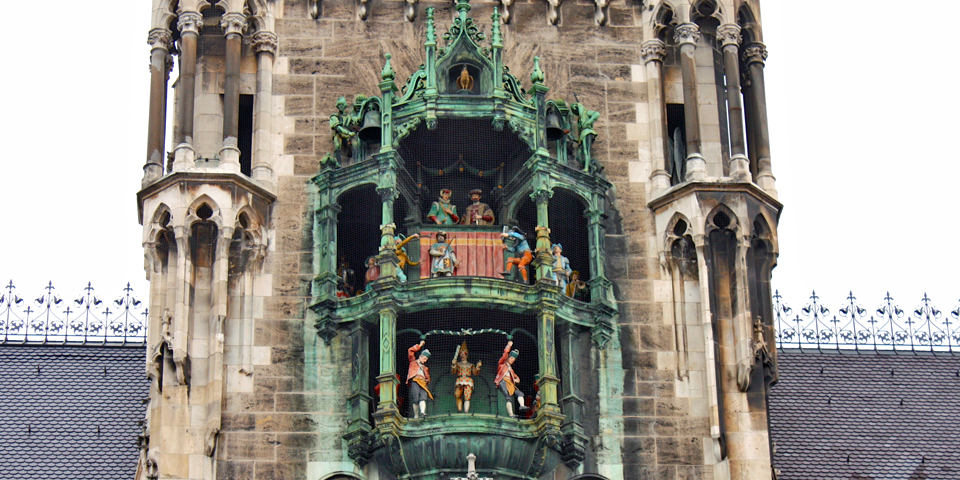The glockenspiel at Marienplatz, Munich, Germany
Munich’s glockenspiel is a must-see attraction when in the city. You’ll find it in Marienplatz, which was was renamed for the Virgin Mary in hopes of protection from the cholera epidemic. Maximilian I had the food stalls moved to nearby Viktualienmarkt in 1807, and medieval jousting, tournaments and public executions are no longer held here, but Marienplatz remains the heart of Munich.
Its original Old Town Hall was destroyed by fire in the 1400s, rebuilt in Gothic style, destroyed in World War II, and rebuilt afterwards according to the original plans. The Toy Museum is inside, and there is a spectacular view from the top of the 12th century tower.
Construction of the majestic Flemish Gothic New Town Hall began in 1867. A 1909 addition that included the 259’ tower made this building an impressive 300’ long.
Its two-story glockenspiel has 32 nearly life-size figures that reenact 16th century events at 11 a.m., noon, and, except winter, at 5 pm. The upper level depicts part of local Duke Wilhelm V and Renata of Lorraine’s lavish three week wedding celebration in 1568. It is complete with jousting tournaments by knights on horseback — white and blue for the Bavarian groom against the bride’s red and white French knights.
The Barrel Maker’s Dance, Schäfflertanz, is performed on the glockenspiel’s lower level. In 1517 coopers danced in the streets with hoops wrapped in greens to show that the plague was over and it was safe to go outside and celebrate.
Every seven years the Schäfflertanz, with dancers, hoop twirlers, and clowns, is performed in Munich during the German Carnival known as Fasching. The next performance runs January 6th to March 5th, 2019.
The eight mid-19th century figures on the corners of the fish fountain are original and the oldest items on the square. The rest of the fountain was rebuilt after being damaged in World War II.
True to the emphasis on historic preservation, the statuary on the facade of the New Town Hall features noble and royals. A tourist information office is found inside this colorful gate.
The nearby Frauenkirche, Cathedral Church of Our Lady, is the symbol of Munich and the earliest Wittelsbach burial site. It was built in 1468 and rebuilt after heavy damage in World War II. The footprint of the Devil is said the be on the entrance floor. Climb the south tower for a stellar view of the city and Alps.






